ZX Spectrum
  | |||||
| Spectrum FDD Loader V1.37 | |||||
| This program allows you to create Spectrum disk images from SNA, Z80, TAP and TZX files. System files are automatically added to enable automatic booting and game/program selection via a menu. Java 1.8 JRE is included, compatible with 32-bit systems such as Windows XP. To use real floppies you will need to install Simon Owen's FDRAWCMD.SYS (download also available - only for standard drives, USB drives will not work...) Generates DSK/IMG/MGT/OPD/TRD/MDR images and 3, 3.5 and 5 1/4'' floppies, on the most popular systems such as +3DOS (Spectrum +2A and +3), Timex TOS (Spectrum and Timex) and MGT Disciple/+D, Opus Discovery, Beta 128 (TR-DOS) and Microdrives... | |||||


| |||||

| |||||
Download | |||||
| Download FDRAWCMD.SYS (needs to be installed to use real floppies) | |||||
| Loader +3e V1.3 | |||||
| Spectrum +3e version of Loader: loads Z80 and SNA images or BASIC programs from a hard drive connected throught an interface (DivIDE, DivMMC, whatever)... | |||||
|
Download TAP
Download DSK | |||||


| |||||
| Alzheimer (Teste de memória) V3.3 | |||||
| This program allows you to test your Spectrum's and DivIDE/MMC memory: 16k, 48k and 128k... | |||||
|
Download TAP PT
Download DSK PT
Download TAP GB
Download DSK GB | |||||

| |||||
| Alzheimer TM V3.5 DivIDE | |||||
| DivIDE version of Alzheimer TM, a dot command to include in the BIN folder, to call it, just type ".testePT" or ".testeEN"... | |||||
|
Download | |||||

| |||||
| Descompensado V3.3b | |||||
| This program allows you to print characters in normal, condensed and double height mode without using ROM routines... | |||||
|
Download TAP
Download DSK | |||||

| |||||
| Interrupções V1.3 | |||||
| Sketch of how interrupts work, completely useless... or not! 😃 | |||||
|
Download TAP
Download DSK | |||||

| |||||
| Screen Shaver V2.1 | |||||
| Just kidding... 😃 | |||||
|
Download TAP
Download DSK | |||||

| |||||
| PianoLar V1.1 | |||||
| First foray into Spectrum sound: Sound generator with 7 octaves and the ability to record and load the created data, just assembler without using the ROM routines, as always | |||||
|
Download TAP
Download DSK | |||||

| |||||
| CL esses V1.4 | |||||
| CLS machine code routines | |||||
|
Download TAP
Download DSK | |||||
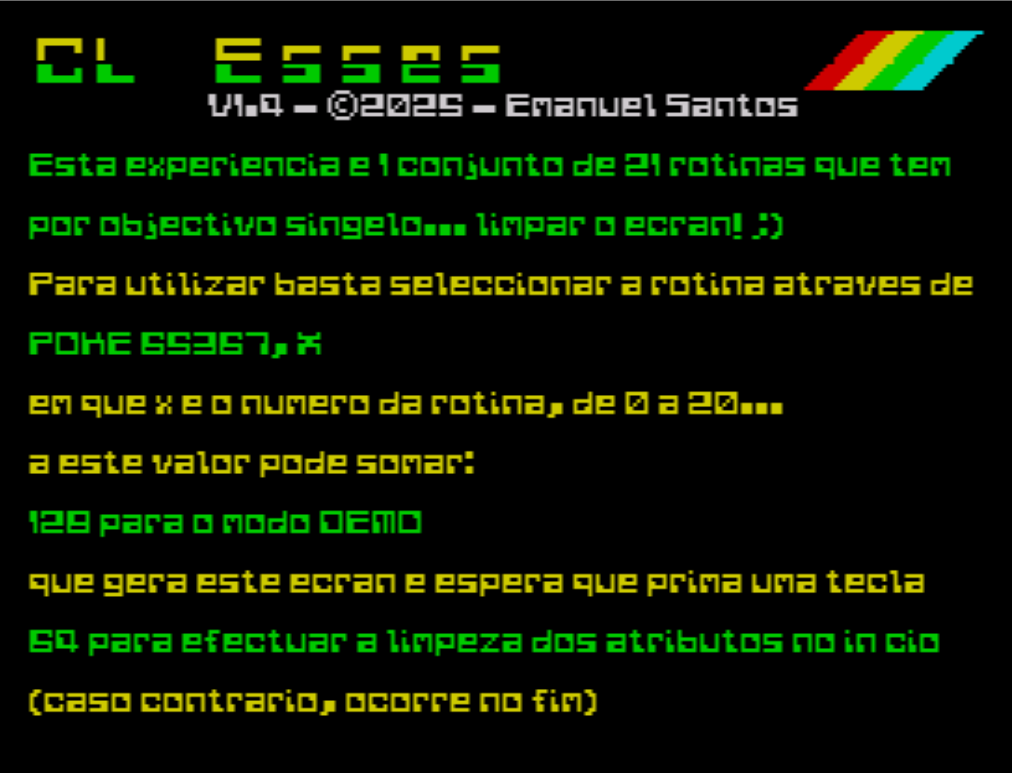
| |||||
| Tape Loader V1.6 | |||||
| This program allows you to save zx spectrum programs in Tap or Tzx, locally or by searching on the internet, and play the audio in the same way that cassette players did about 30 years ago, connecting to the spectrum by cable or through the ZX Blue... The excellent ZXINFO API is used to search and obtain data (TAP/TZX files and images). | |||||
| |||||


| |||||

| |||||
| EsxDOS V0.89 no TC2068 - DivIDE/MMC V1.2 | |||||
|
The challenge was launched, managing to run EsxDOS on the Timex 2068 with a DivIDE or DivMMC, everything was set to go wrong, the system brilliantly intercepts the ROM routines and I always avoided the ROM like the devil from the cross, even so, so althought it is not possible to use TAP or TZX since the definition of the interception address (1378) is at the hardware level, both Z80 and SNA work, as long as they logically do not use the ROM... For the real machine, TAP and ZIP are available (unzip and copy to the SD card), after flashing, turn off, write protect, start, press NMI For Fuse, the only emulator I know that supports DivIDE/MMC decently, insert the HDF (Media -> IDE -> DivIDE/MMC -> Insert) and open the snapshot, just do a hard reset and press NMI | |||||
|
TAP - DivIDE
TAP - DivMMC
Download ZIP
Fuse DivIDE
Fuse DivMMC
Fuse HDF
| |||||
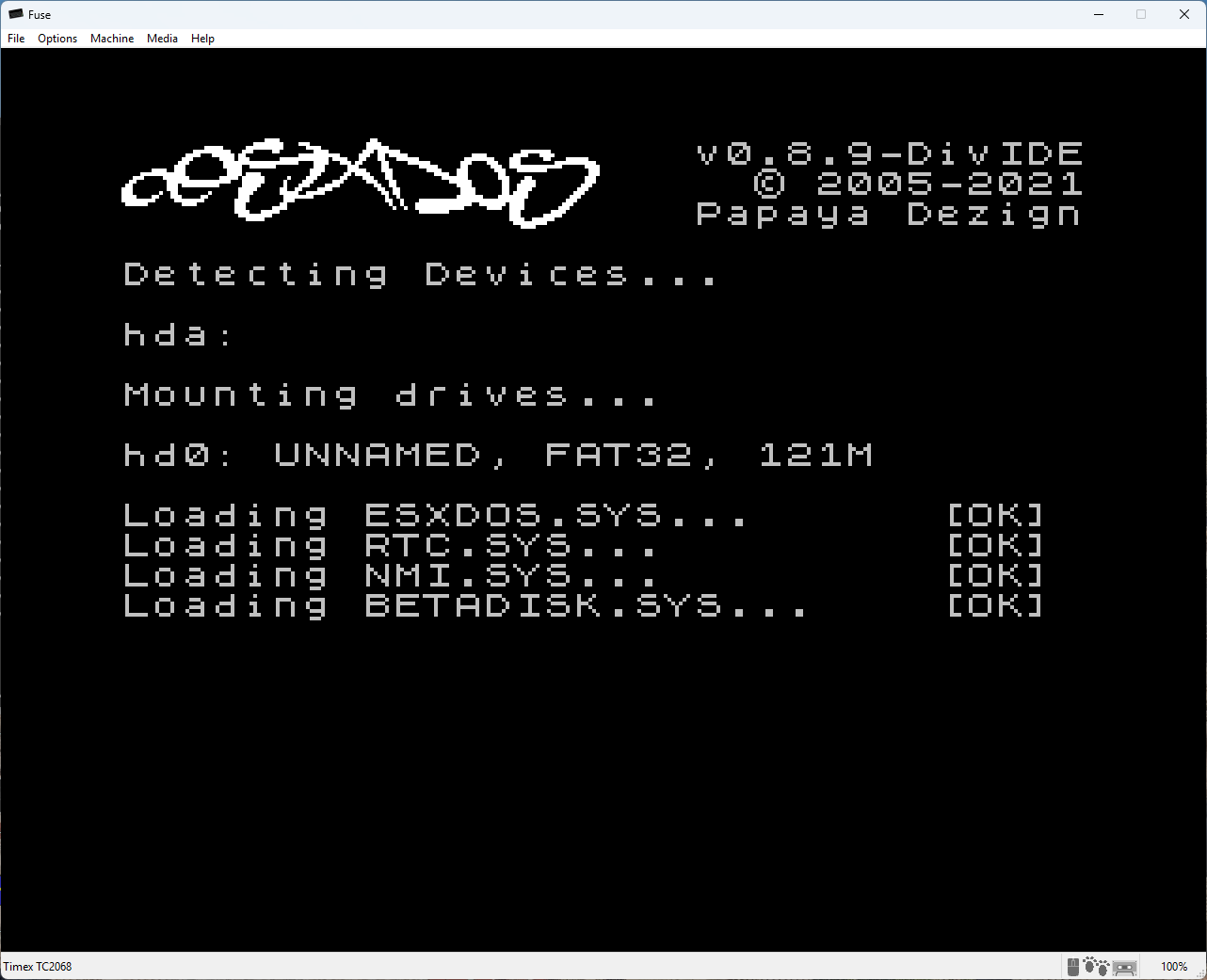

| |||||
| 48k/128k/+2A ZX Spectrum | |||||
|
ZX Spectrum 48k/128/+2A emulator that uses the projects from José Luis Sánchez, Don Superfo and TomDD Materiais: Emulator, PCB design, 3D project, 1 Raspberry Pi, prefered the 3A version as it's lower, 40 Cherry MX, 8 diodes, 1 header of 8 contacts, 1 header of 5 contacts, several wires! | |||||
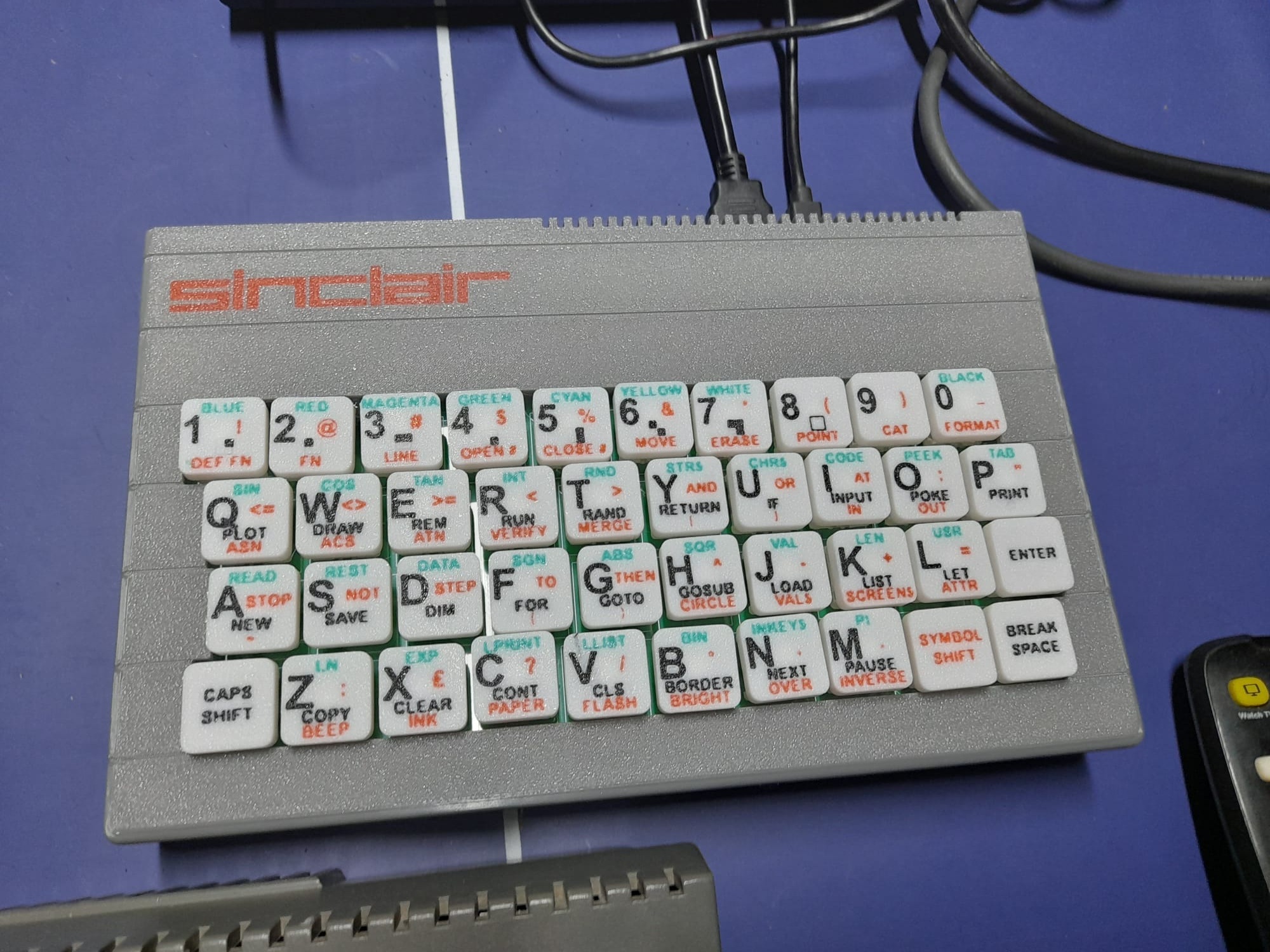
| |||||
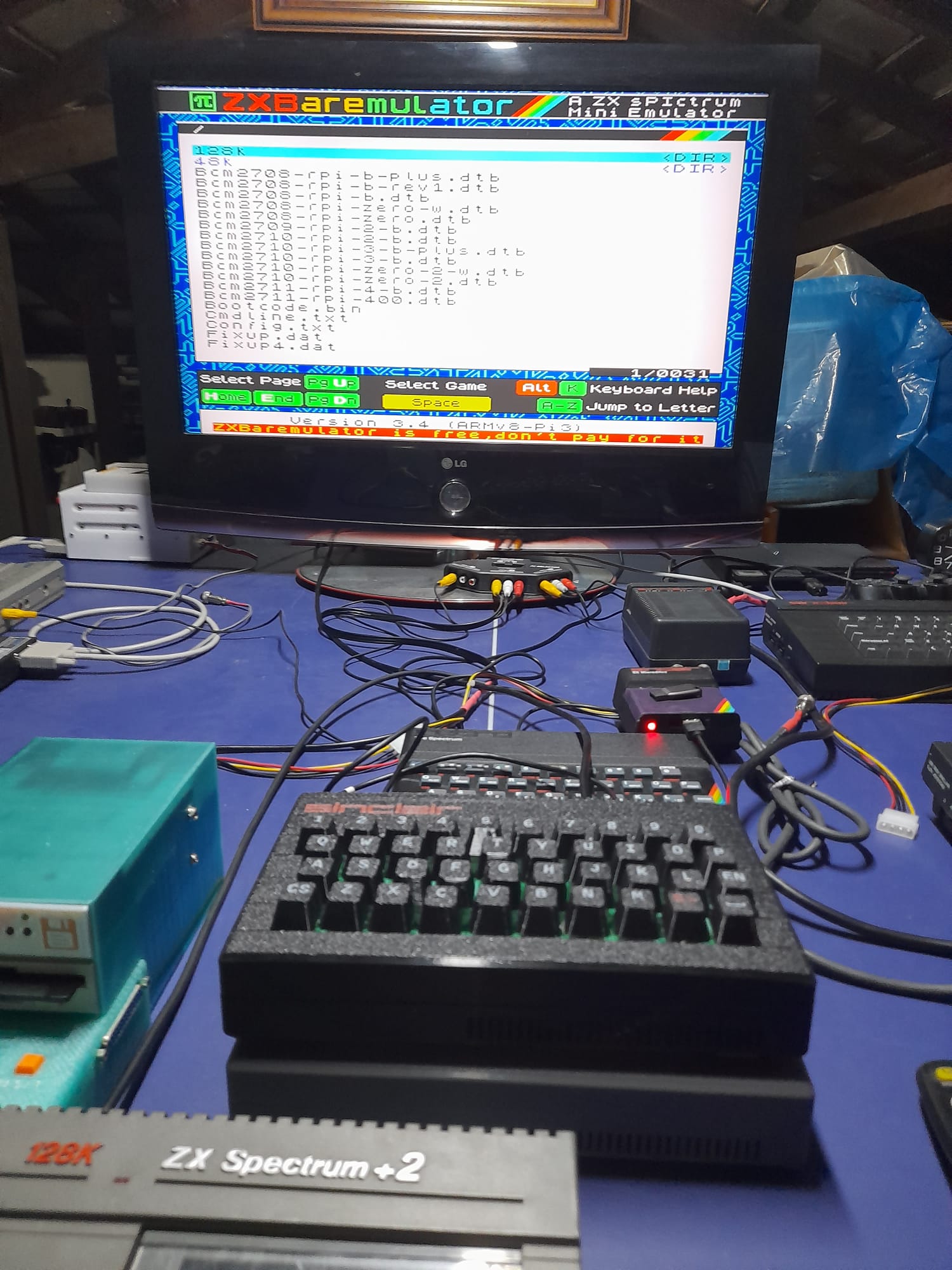
| |||||
| USB matrix keyboard | |||||
| So what about Fuse on the Raspberry? I tried a python script to read the matrix keyboard and generate the key presses, but even though the system read them, Fuse wouldn't go to uinput, so there's nothing like adding a Raspberry Pico and getting it to send the readings on USB... I used the work of ikjordan changing some things since I needed F10, TAB and ESCAPE for Fuse and I had problems with the sound card coming from Pico, having to disconnect it. To use the extra keys: press CAPS twice and then 1-0, ENTER or SPACE, to get F1-F10, TAB and ESCAPE... | |||||
| Download scripts | |||||
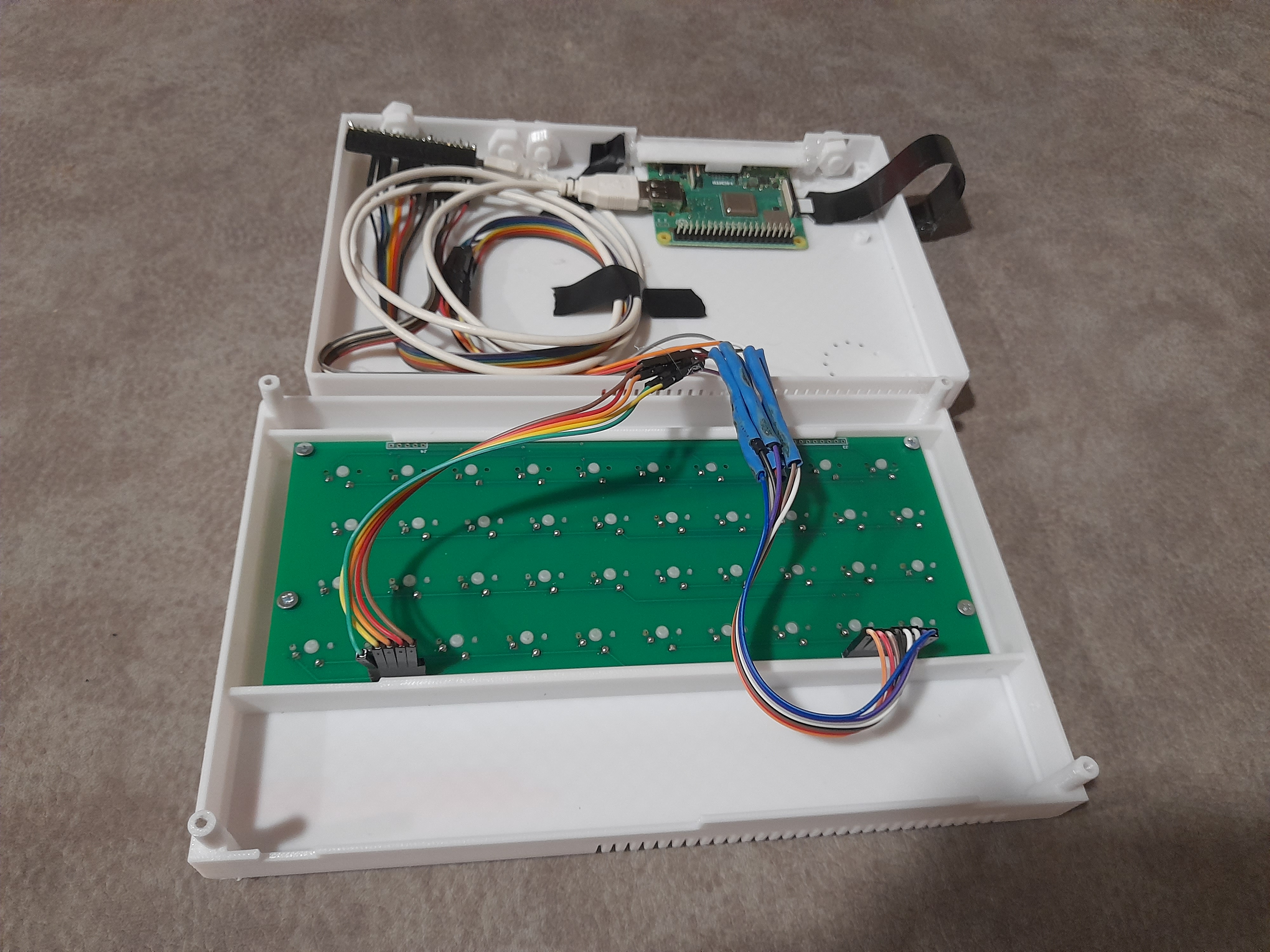
| |||||
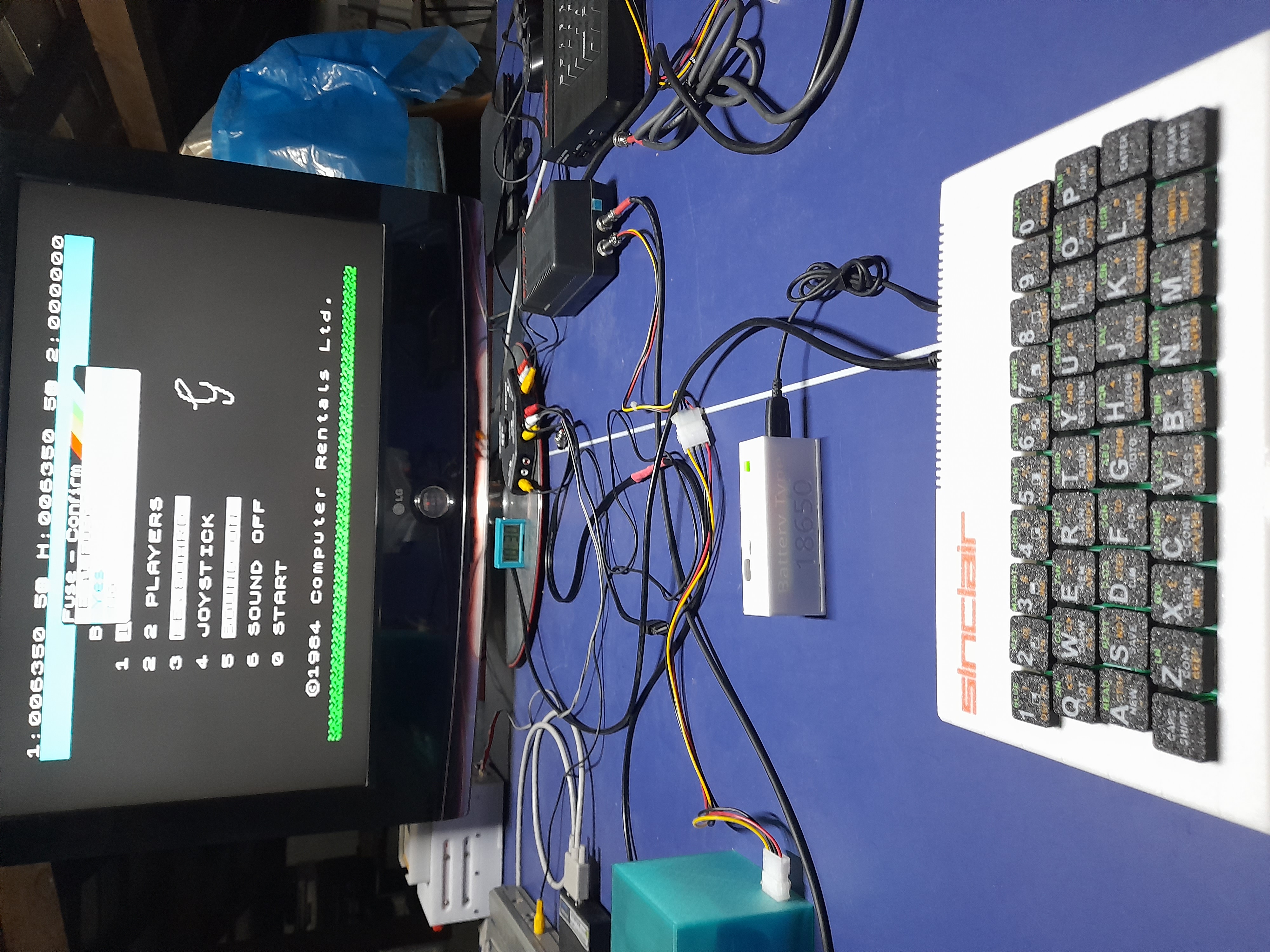
|
©2025 EJSSoft - Software de gestão & WebDesign




